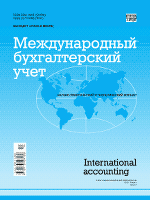Abstracting and IndexingРИНЦReferativny Zhurnal VINITI RAS Worldcat Google Scholar Online availableEastvieweLIBRARY.RU Biblioclub |
The money of Medieval Europe
Available online: 27 January 2015 Subject Heading: CHAPTER OF HISTORY JEL Classification: Pages: 56-68
The article considers the main trends and specific features of money and monetary circulation development in the European countries during the rise and fall of feudalism. At the early Middle Ages stage the main value was land ownership, therefore landholdings were an indicator of wealth, and for the sake of land possession there was an attack on common lands. During 5th-12th centuries, money was in recession and played a secondary role in the opinion of representatives of different social groups. As differentiation of society progressed, the interest in money started increasing. The pronounced division of the population into poor and rich resulted in more significant role of money. They started crusades, expansion of trade relations, growth and development of cities contributed to the increasing role of money. Oriental luxury excited feudal interest in money. International nature of trade increased the variety of goods. Cities became centers of trade and crafts. The trade revolution of the 13th century and the process of formation of centralized national states changed the view on money of the church and the society, and contributed to establishing a uniform monetary system in countries. Consolidation of the role of money led to developing new pits and silver mines. Germany and Czech Republic appeared to be the most advanced countries in this regard. Precious metals and the coins minted of printed metals turned out to be the prime goods. The author pays attention to the issues of types and a variety of coins, their minting, development of monetary policy and the condition of mints. The second aspect consists in the description of attitude to money - the drive to possess and use it. Keywords: money, coin, gold, silver, merchant, trade, town, price, lease, feudal, lord, king, pound sterling, church References:
|
ISSN 2311-9381 (Online)
|
|








